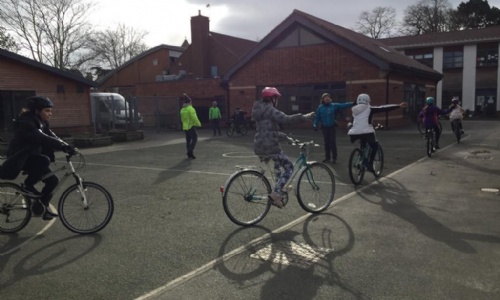Electrifying science
In science this week we have been continuing our work on electricity by learning to draw circuit diagrams. We can now use internationally recognised symbols to represent the components in a circuit, so that any electrical engineer could view our work and build our designs. We found out that circuits are always drawn as rectangles, using straight lines. Finally, we put our learning into practice by building our own circuits and drawing them as circuit diagrams. We have also been busy this week showing what we know with some assessment papers, learning to use a springboard in gymnastics and plotting coordinates in the first quadrant.








.jpg)



